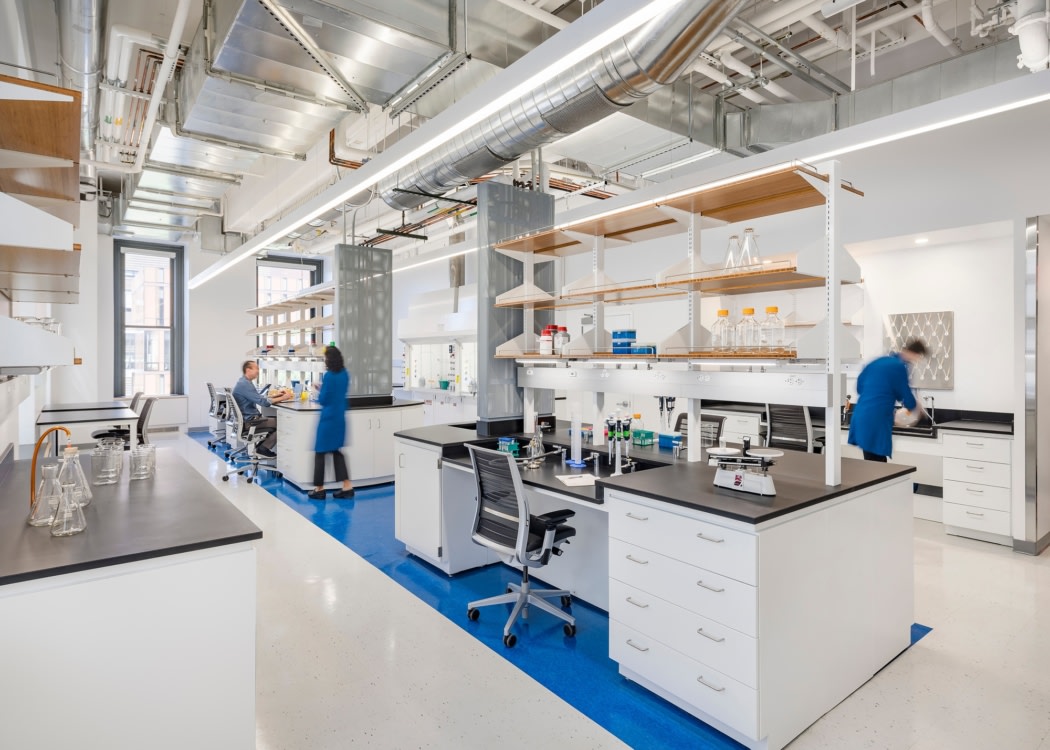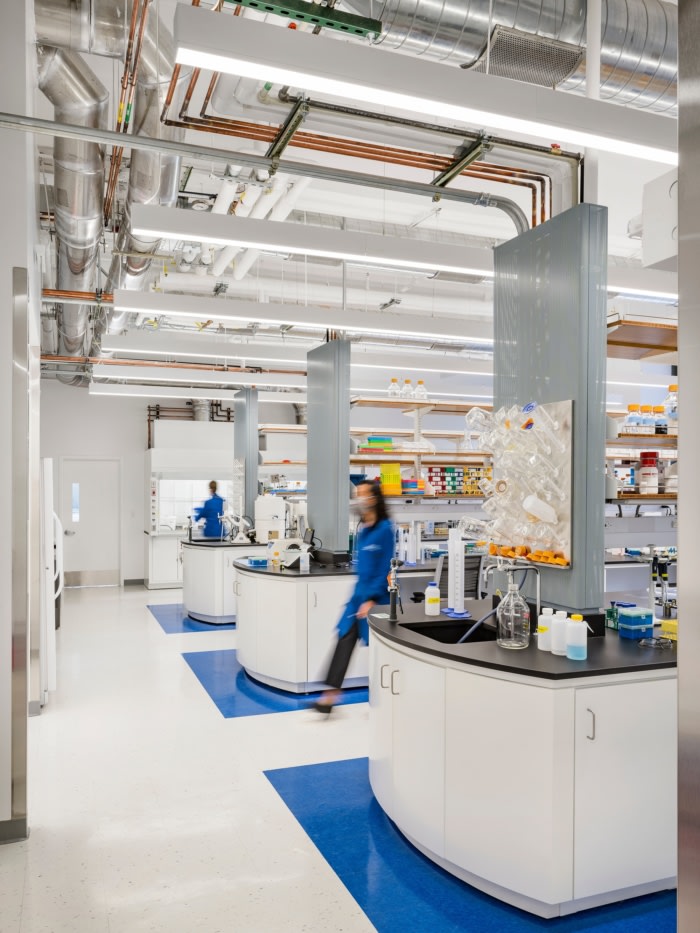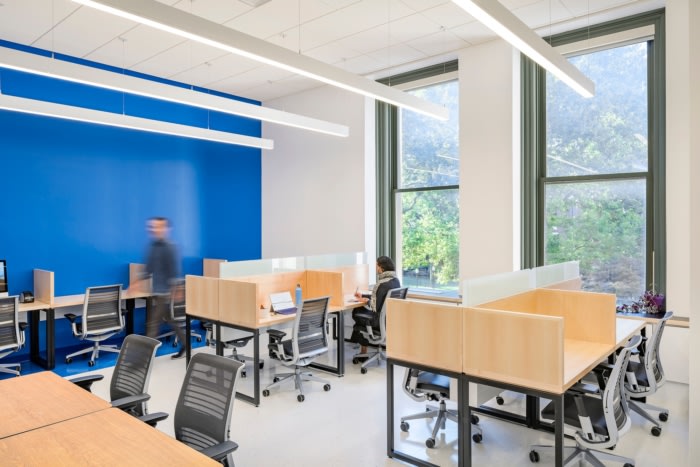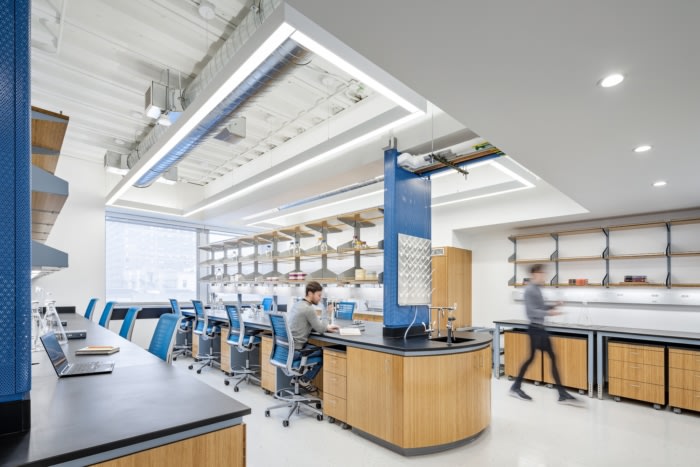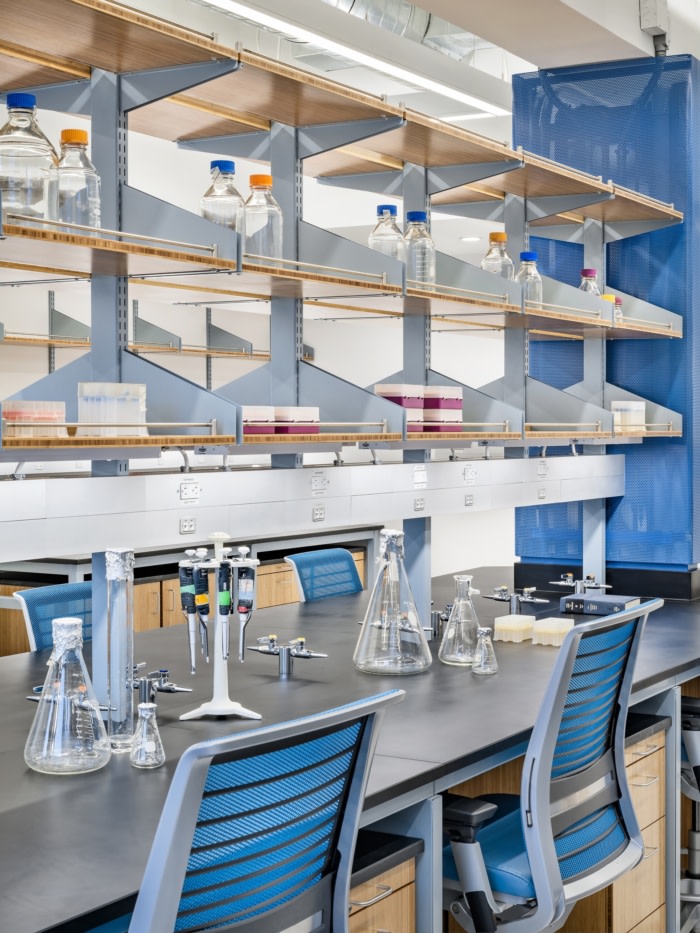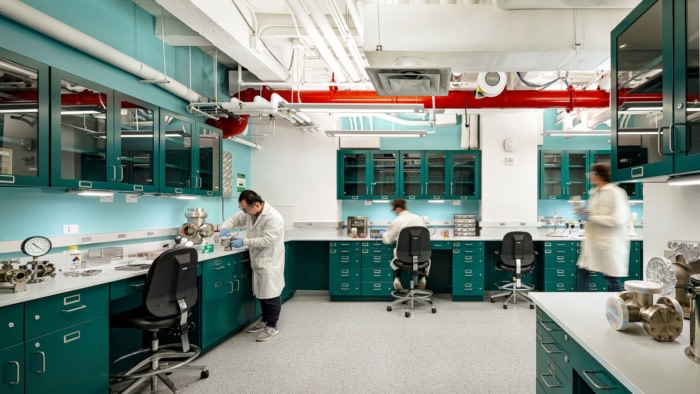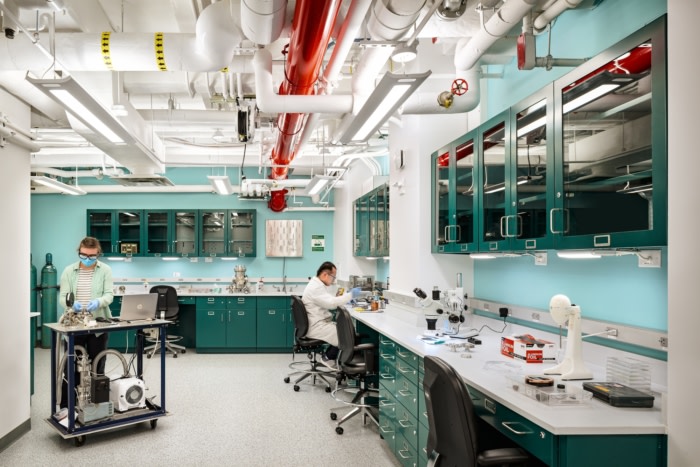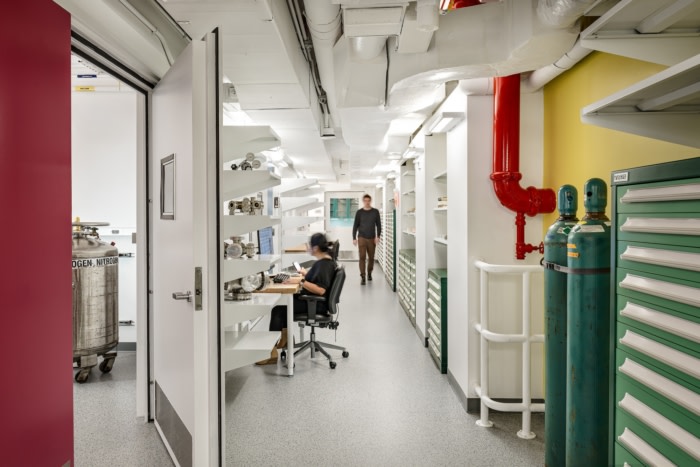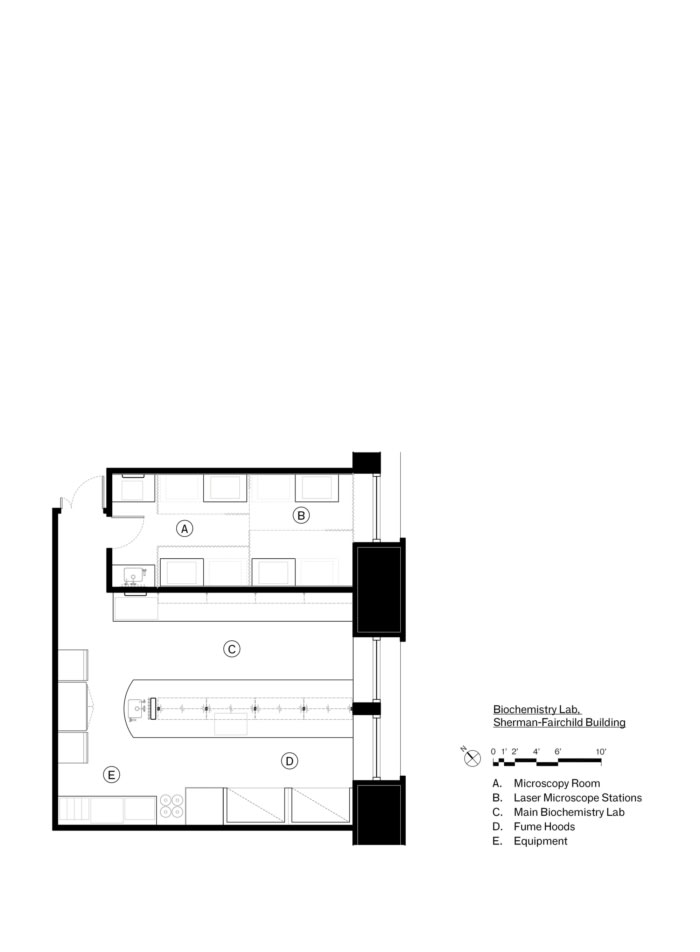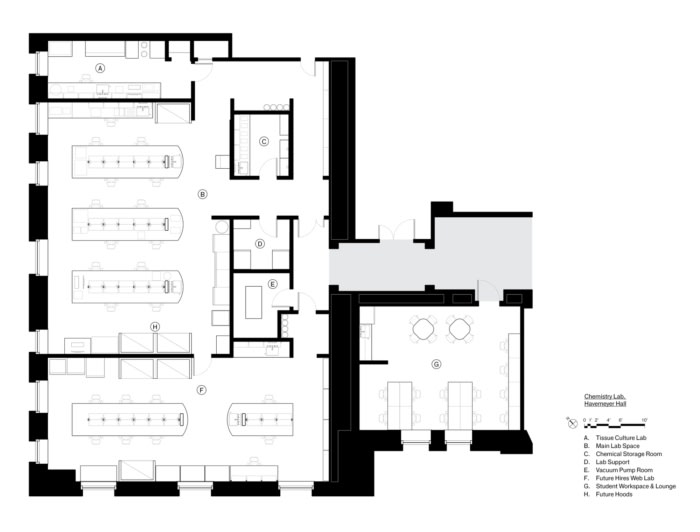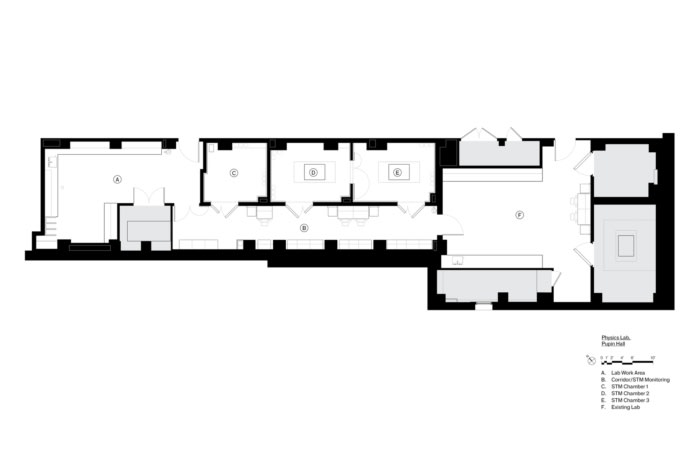Research Labs at Columbia University
Shakespeare Gordon Vlado Architects (SGVA) was tasked with creating three separate Research Labs at Columbia University focusing in New York City, New York.
SGVA is proud to present a multi-year project to help Columbia University modernize and repurpose its existing facilities. Spread across the university, the work, begun in 2018, was undertaken to create a series of new research laboratories and support spaces for expanded needs in the biological sciences, chemistry, and physics departments. These projects involved complete renovations to existing laboratories on campus, along with innovative design concepts to facilitate the new and future goals for scientists and their teams in advancing their research. Three of these projects–a chemistry, biochemistry, and physics lab–are highlighted below, each designed for new or expanded research. The design of these spaces takes advantage of the available infrastructure on campus to create facilities that are modern in their design and functionality, while embedded within the historic landmark architecture at the center of Columbia’s campus.
For each location, SGVA worked closely with stakeholders to learn the requirements of the research teams, university administrators, facility operators, and managers to address design challenges typically found in older and historic buildings, especially projects that incorporate complex technology into those spaces. Using a collaborative design approach, SGVA combined each lab’s unique requirements with its budgetary, regulatory, and infrastructural factors – a mix of opportunities and constraints –to maximize efficiency. The generous use of color, emphasis on the quality of natural and artificial lighting, and the careful placement of equipment work to create an appealing and inviting interior lab. The result is highly functional research labs with ample infrastructure and support spaces that celebrate and showcase the university’s commitment to research, comfort, and design excellence.
SGVA has chosen three laboratory projects to highlight:
Chemistry Lab, Havemeyer Hall
SGVA was asked to fully renovate an existing 2,800 sf lab on the fourth floor of Havemeyer Hall, a National Historic Landmark designed by McKim Meade and White that is used as a teaching and research facility. The design takes advantage of the ample ceiling height and existing natural light, and by capturing additional space located outside the original lab, to yield additional lab space to accommodate the research team’s program and add higher functionality.The renovated space includes a Biosafety level 2 tissue culture room, cold rooms, bench space for centrifuges, microscopes, and other equipment and fume hoods. It also provides an adjacent work area and break room supporting research scholarship and study, and a separate annex lab for future hires. Lighting, ductwork, and utilities were all designed in alignment with the lab benches to provide maximum comfort and functionality for research scientists and graduate students who spend many hours in focused study. Details, such as the rounded benches and placement of writing tables at the windows, enhance comfort and utility, supported by a material palette of blue and white that is calming and simple. The lab, with its soaring, light-filled open areas and new infrastructure and support spaces, now serves as a model of future chemistry labs at the university, and an excellent recruiting tool for the Chemistry Department.
Biochemistry Lab, Fairchild Center
SGVA was also invited to design the renovation of an existing lab and support spaces in the Fairchild Center in order to provide a new facility for molecular biology, microscopy, and chemistry research. The project was developed around the specific needs and functional requirements of a new professor in the Department of Biology, and necessitated a complete renovation of the lab, along with an ancillary support space and an upgrade to the research team’s office area.The finishes and systems were upgraded, incorporating lighting, utility connections, and an electrical sub panel, and included the addition of new HVAC infrastructure and equipment. The project also includes all new bench space, equipment, distribution of lab services, two fume hoods, and a laser facility that can be subdivided into four separate zones, each capable of operating independently. The selection of materials honors the high modernist appeal of the building’s original design, while improving lighting and surface areas for research. The University is pleased to see this previously underutilized space brought back to its full functional potential as part of the ongoing modernization of the nearly 50 year-old research facility at the heart of Columbia’s main campus.
Physics Lab, Pupin Hall
Pupin Hall, a 1927 McKim Mead and White building and a designated historic landmark for its role as the home of the Manhattan Project, continues to serve the university as the primary location for the Physics, Astrophysics, and Astronomy departments. In 2020, SGVA began a major expansion of an existing research facility on the cellar level for a scientist studying condensed matter and atomic, molecular, and optical physics. The footprint of the lab was expanded, and it was determined that in addition to modernizing its existing lab space, the new facility would need to accommodate a new laser system, along with two experimental stations where the laser interacts with a sample in a scanning tunneling microscope (STM). After an extensive feasibility study, several underused support spaces were combined to create a new, high-performing lab with ancillary spaces and three STM chambers. These chambers, each ten feet deep, required subsurface imaging to locate bedrock below the building, and were built using a unique concrete wall design, free of any steel reinforcing, to prevent interference with the scanning technology. These environmentally-isolated and sound-proofed chambers are clustered near supporting areas for equipment and storage, as well as lab space for analysis and computation. Outside the chambers, the lighting is bright and the colors bold. The lab’s teal, yellow, white, and red color scheme, selected with the enthusiastic support of the research scientist who will use the space, helps to enliven the cellar-level space and creates an environment for the research team that is both fun and functional.
Design: Shakespeare Gordon Vlado Architects (SGVA)
Design Team: Mark Gordon, Ashima Chitre, Sean Kennedy
Photography: Alexander Severin

